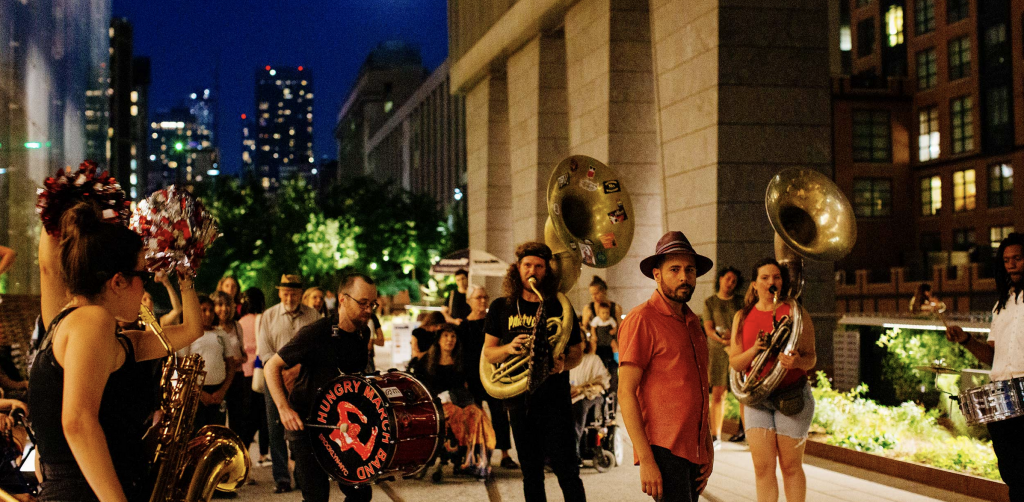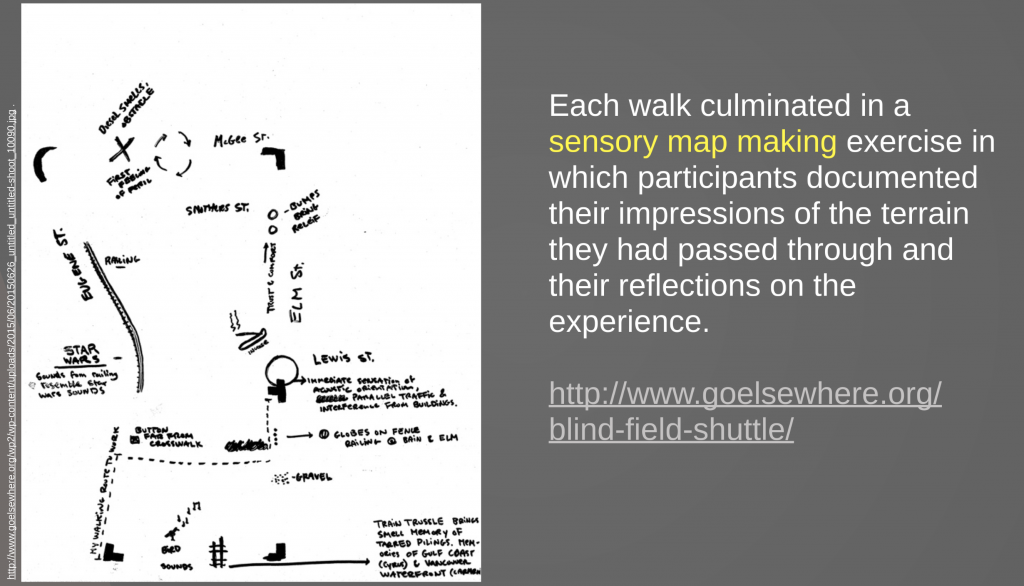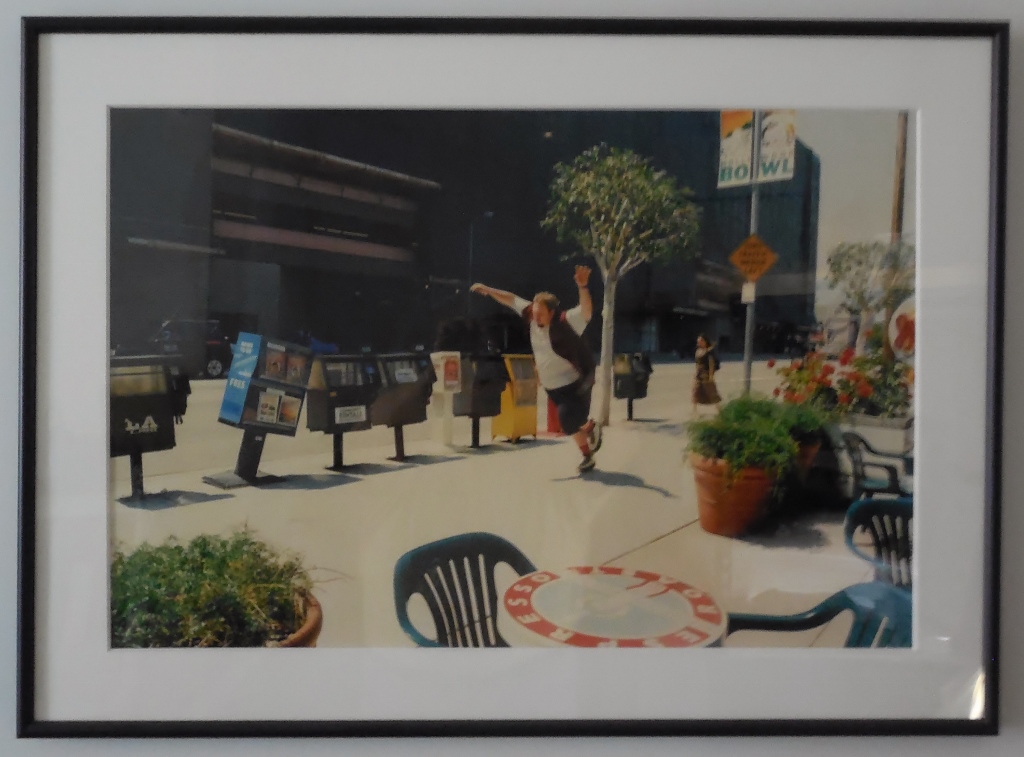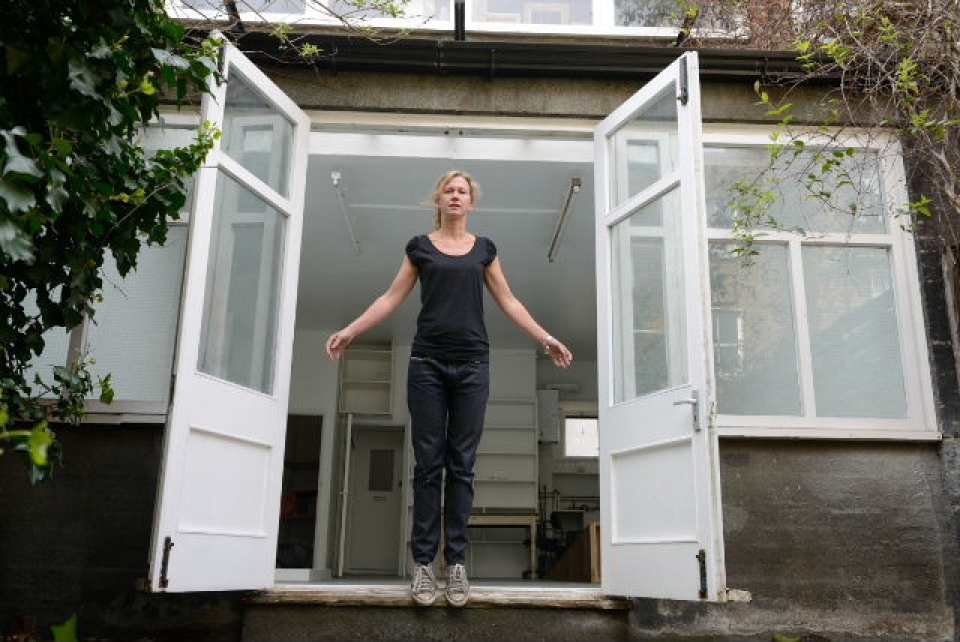As a large man, Kersels often makes work dealing with his imposing physical presence. He examines stereotypes associated with his gendered body size: clumsy, pathetic, dangerous. These staged photos play into those stereotypes about awkwardness, while the precision of the staging can be interpreted to contradict this reading. (credit: Walk Ways catalog)
—
“Martin Kersels is much larger than most people. He was once described as a “man-mountain” by his friend and colleague Leslie Dick. As a man who stands 6’7” tall and weighs 300 pounds, Kersels draws attention to his body, its size, and the things he’s able to do with it. …
Physicality permeates Kersels’ work. He uses himself as a subject for expressing the emotions we share by virtue of being corporeal. One of these emotions is vulnerability, which Kersels exposes in photographic series that capture him tripping, falling, and riding a bicycle that is too small for his frame. As people, we share embarrassment at the thought of falling in public or in watching someone else trip. However, Kersels’ Tripping series shows us just the thing that embarrasses us. The artist photographed himself tripping on public sidewalks in populated areas and in broad daylight. Tripping highlights Kersels’ desire to connect to others by exposing himself in an embarrassing, although staged, moment. …
Established themes of vulnerability, the body, humor, and playfulness create a thread of continuity among his photographic and sculptural works. …
About the Artist:
Martin Kersels was born in Los Angeles, California in 1960. He began his undergraduate degree in 1978 at the University of California, Los Angeles. After applying to film school and not being accepted, Kersels decided to pursue art history. Kersels then took studio art courses after he decided that art history was not for him; he thought he was a ‘horrible writer.’ He received his bachelors degree in art from UCLA in 1984. After he graduated, he became a member of a neo-dadaist performance art group called SHRIMPS.
Kersels described his performance work with SHRIMPS as movement-based, using very few words and a high level of slapstick comedy, based on the fallibility of the body. Others describe SHRIMPS as a group known for their bizarre costumes and lumbering movements. The women in SHRIMPS were small and muscular and the men were all 6’7” or taller. The first series of SHRIMPS performances were about redefining views of big men being unkind or threatening. The performer Weba Garretson, who later worked with SHRIMPS, described meeting the group by saying, “I was scared of them, even though they seemed like such nice people.” When funding for performance-based art work began to disappear in the late 1980s and early 1990s, Kersels decided to go back to school. In 1993, Kersels was accepted to graduate school at UCLA, where he concentrated on integrating his performance work with the human body with object making.
Kersels received his Master of Fine Arts degree from UCLA in 1995. When Kersels helped the artist Paul McCarthy videotape his performance work, it helped change Kersels’ perspective about making interdisciplinary art. Kersels served as co-director of California Institute of the Arts (CalArts) Program in Art from 1999 until moving to the Yale School of Art in 2012, where he became Associate Professor and Director of Graduate Studies in Sculpture. Kersels has exhibited his work in major exhibitions including the 1997 Whitney Biennial, as well as in many solo exhibitions.” (credit)




